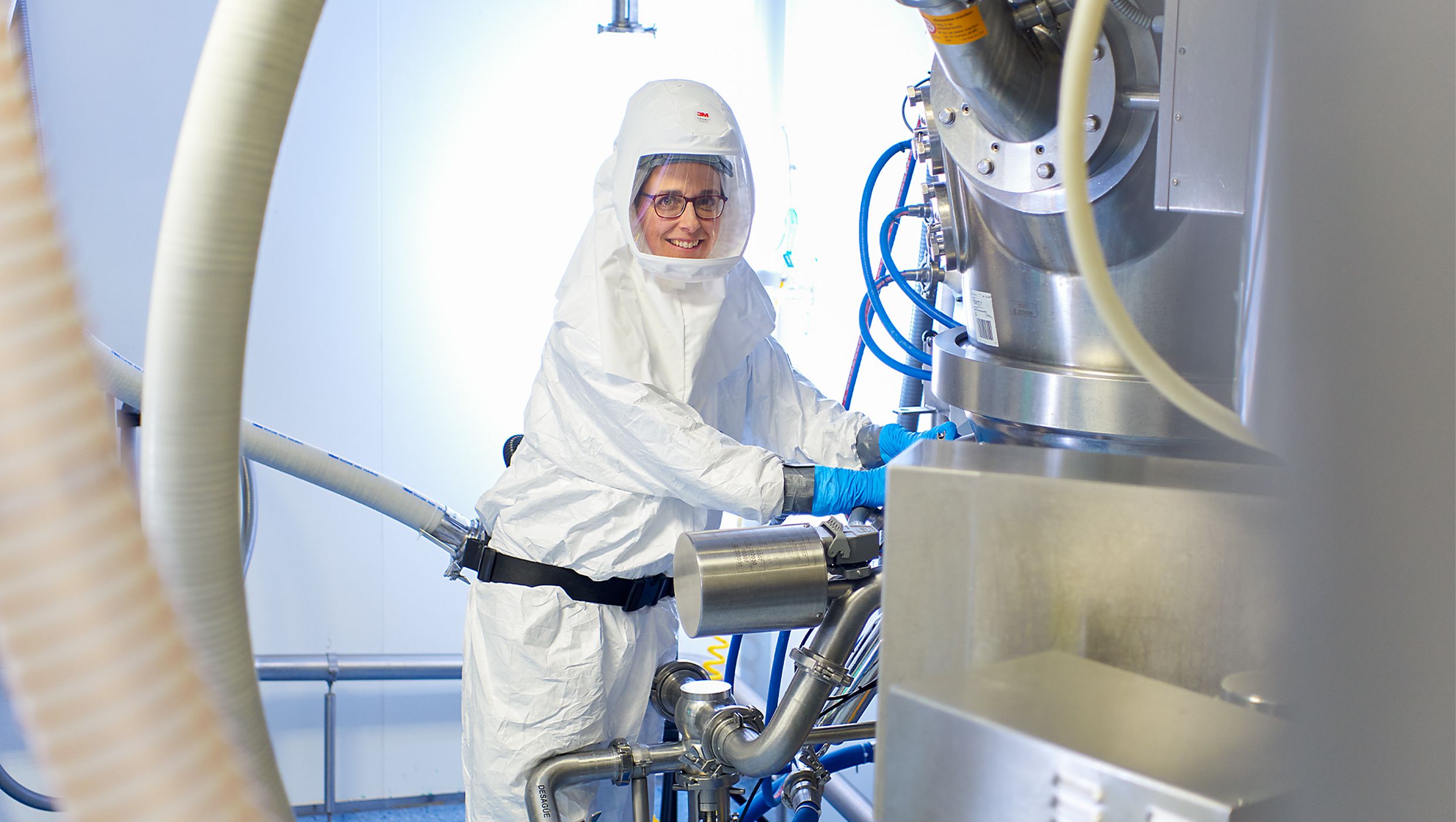Safety first: Considerations when formulating high potency compounds
A growing number of APIs in development are considered to have high potency. One reason for this is the significant effort now being put into oncology research. While more than 25% of all drugs currently in development are classified as highly potent, about 60% of all approved treatments for cancer are based on HPAPIs. The global high potency APIs market size grew from $24.53bn in 2022 to $26.65bn in 2023 at a CAGR of 8.6 % and is expected to grow up to $36.14bn in 2027 at a CARG or 7.6 %.
There are several ways in which high potency can be defined. A molecule is usually considered to have high potency if its occupational exposure limit (OEL) is below 10µg/m3, but this is not the only consideration. If it has a therapeutic effect at 150µg/kg or less, or a daily dose below 1mg, then it is classified as highly potent. It can also arise from particularly high selectivity; this is beneficial for patients as they will need a smaller dose for successful treatment, but it also means that it might cause cancer, genetic mutations or developmental defects at very low doses.
The tiny quantities required to have a therapeutic effect means extreme care is necessary if high potency compounds are being formulated. When evaluating the containment and other measures needed to keep operators safe, it is important to measure the risk, not merely the hazard. The OEL determines the hazard, but this should be combined with exposure data to determine the real overall risk to employees working with the compounds. Factors influencing exposure include the percentage of API in the formulation, its physical state, whether it is dusty, the volumes being handled, and whether any operations are carried out in the open.
By taking overall risk into account, it will help inform the selection of appropriate exposure control measures, as the actual exposure will be included in the assessment. It will inform the choice of which facility and which containment equipment are most appropriate for handling a product. And, of course, it will also help when selecting the optimal personal protective equipment to keep employees safe.
It is also important to remember that in the early stages of a new drug’s development, the exact potency or toxicity of a product is unlikely to be known. Until there are sufficient data, a new API should be considered highly potent. It may be possible to conclude later on that additional measures are not necessary, but at least in the beginning it is wise to be conservative.
Handling issues
There are several critical considerations when handling an API. As well as limiting employee exposure, it is also important to ensure the environment is protected. For a contract manufacturer, it is also particularly important to prevent cross-contamination when equipment is used for multiple different products.
To ensure all these concerns are taken into account, at Siegfried we usually employ the double barrier concept. This means there will always be two protective barriers between the product and the operator, and also between the product and the environment. It is achieved by ensuring effective containment of the equipment, by employees using appropriate PPE, and by a cascade of pressure differentials between rooms, corridors and the exterior to prevent the product escaping from the isolated facility.
Specialist equipment and isolators are available that are specifically designed to ensure containment. Dispensing isolators ensure safe weighing. While wet granulation is inherently less hazardous than handling dry powders, complete containment on a wet granulation line will ensure there are no open operations. This includes product transfer. Similarly, tablet presses and capsule fillers should be enclosed within a rigid isolator. Clean-in-place capabilities are also important throughout the equipment train to minimise the need for manual operations. All of this comes at an additional cost, with the investment required to create a safe high potency facility for making dosage forms typically two times higher than it would be for a standard facility.
A number of other operational challenges must be addressed when handling high potency products, all of which have cost and time implications. Production times may be longer, for example, because contained handling of material is likely to be slower, and sampling will also take longer. Energy costs for heating and cooling the facility will likely be higher, because air should not be recirculated. Waste will require very careful handling, including wastewater, and the costs of treatment and incineration are not insignificant.
Changeover times between batches and products will also be longer because of the need for extremely rigorous cleaning. This is a particular issue for a multipurpose facility, especially if it needs to meet the subtly different requirements of more than one regulatory body. And, of course, the employees need to be rigorously trained in safe handling in addition to routine operations, including how to enter and leave the facility safely, and how to act in the event of a leakage or other emergency. Providing appropriate PPE for the operators adds to the overall costs, too.
Time pressures
There will inevitably be pressure to push the product through the clinical stages as quickly as possible in order to meet challenging timelines. The analytical methods will likely still need development or validation, but will be required early on to ensure all equipment surfaces are clean to prevent cross-contamination with other products. Of course, for a high potency product, the limits for carry-over will be lower compared with standard oral solid dosage forms.
Small-scale equipment is essential when there is only a limited supply of API for the initial trial batches. Here at Siegfried, for example, in a small-scale wet granulation line we can cover batches of 1–8kg in the high shear mixer, and up to 5kg in the fluid bed drier. Importantly, we can replicate the equipment on a larger scale, speeding up the scale-up process. This is a key factor in reducing timelines.
Selecting the right partner is particularly important for development scale up when working with high potency compounds. Of course, availability of the required equipment and containment infrastructure is important, but it is not the only consideration. Experience and expertise, allied to the technical skills required, are key to ensuring the successful, timely development of a dosage form. Using the same partner from early development through to commercial production should speed up transfers between the different stages, thus shortening timelines.
Formulations for high potency drugs typically only contain a few milligrams, or even micrograms, of API. Does the CDMO have the relevant development expertise and range of processing capabilities to develop tablets or capsules containing such small doses?
Underpinning the choice should be a confidence that all the safety aspects are comprehensively covered. Inspections to assess this should be carried out routinely as part of the selection process, both to avoid unwelcome surprises in the future, and to ensure both parties have the same safety culture. And, of course, analytical capabilities for low-level detection are essential, along with appropriate cleaning procedures to ensure there is no carry-over. Packaging capabilities to cover small orders and having white stock generation as an option could be an important factor to cover not only the clinical studies but also the commercial supply for different markets with low demand. Good project management and the required quality systems are also important in achieving a safe and efficient formulation process for any new high potency pharmaceutical.
Siegfried is well placed to formulate highly potent compounds, from small batches to commercial quantities. Our GMP facilities have 100% air renewal, with all the necessary equipment and PPE required to guarantee operator safety and the secure handling of potent products. The cleanrooms meet EU GMP class C standards (the equivalent of ISO 7, US FED STD 209E class 10000).
At the start of each project, we carry out a thorough risk analysis of the active substances, ranking its occupational exposure level (OEL) or band. When deciding whether we are able to handle a substance, we take into account the characteristics of our facilities and equipment, including the containment and PPE requirements, and the properties of the active substance.
In most cases, we can work with substances with OELs down to 0.1µg/m3, which covers the overwhelming majority of highly potent APIs. Our facility in Barberà del Vallès, near Barcelona in Spain, delivers highly potent products in multiple formats for customers worldwide, including the US and Japan as well as Europe.

